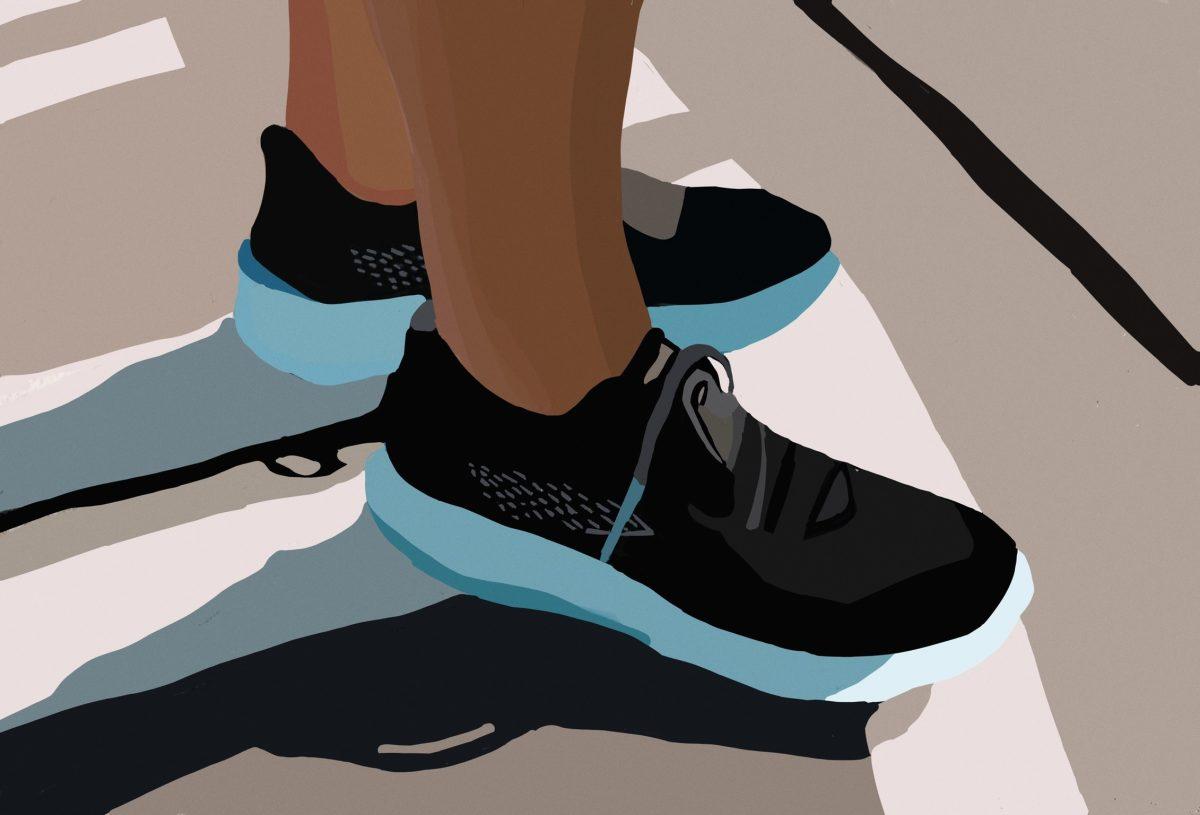Back in early 2015, I laced up my Nike Free 3.0s for my first day of middle school track. All that mattered then was that the shoes on my feet were light and comfortable. As I progressed through middle school and high school, I experimented with different running shoes, only to develop a stress fracture in high school from the sole of the New Balance Fresh Foams being too soft for my stride.
Following the injury I discovered the Nike Zoom Fly SP. I was drawn in by the allure of the carbon fiber plate, a new technology in Nike running shoe design. The carbon fiber plate makes the shoe more responsive. Whenever a runner’s foot strikes the ground, the plate flexes and then releases when the runner pushes off, increasing efficiency when running. After a few different pairs of Zoom Fly SP, I upgraded to the Nike Vaporfly 3s, which offered more support than the SP.
Early in 2020, Brooks Running Shoes released a new trainer coined the Hyperion Tempos. Marketed as their fastest trainer ever, these shoes offer a lightweight and responsive feel. As someone who has trusted Nike for my running shoes for years, trying out the Hyperion Tempos was certainly a step out of my comfort zone.
When I first put on the Hyperion Tempos, I was skeptical. They had a firm sole, with a mild heel-to-toe drop, a measurement related to the shoe’s cushion height, but no carbon fiber plate. I generally run on the balls of my feet, so the heel-to-toe drop provides support for this running style. The firm sole on the Hyperion Tempos mimics the feel of a carbon fiber plate without being as aggressive as a shoe that has one. In other words, the shoe still feels responsive during a run while maintaining support over longer distances.
I use the Hyperion Tempos for most of my standard daily runs of around six to seven miles. I also use them for long runs, pushing up into the 10-mile range, because I still prefer a generally “aggressive” shoe for higher mileage. This means that I wear these shoes about four times a week, so they take the brunt of the mileage that I run. Each week, these shoes see approximately 30 miles and will need to be replaced at around the 300-350-mile range. I’ll need to replace mine in about two months; however, as a member of the men’s track and field team, I do run more than the average runner.
During workouts, and more speed-based activities, I tend to move back to the Vaporfly. The responsiveness of the carbon fiber plate makes work on the track and on tempo runs feel effortless. The best way to describe the feel is “bouncing,” like a gazelle prances through the Savanna. The Hyperion Tempos can also be used for more speed activities if you prefer a less invasive shoe that allows you to “feel the ground” when you run. Runners who are used to running on a less aggressive shoe, such as the Brooks Ghost, one of the most popular distance running shoes on the market today, may prefer the Hyperion Tempos for tempos and even speed work as well.
The Brooks Hyperion Tempos are marketed at $150. This is on the expensive side; however, it is not uncommon for top-notch running shoes to run well over $100. With all of the technology put into the design of these shoes, they are a premium product and the price reflects that.
Throughout quarantine, I found my escape from being trapped indoors through my daily runs. The Brooks Hyperion Tempos have helped me escape these weird times, even if just for an hour.














































